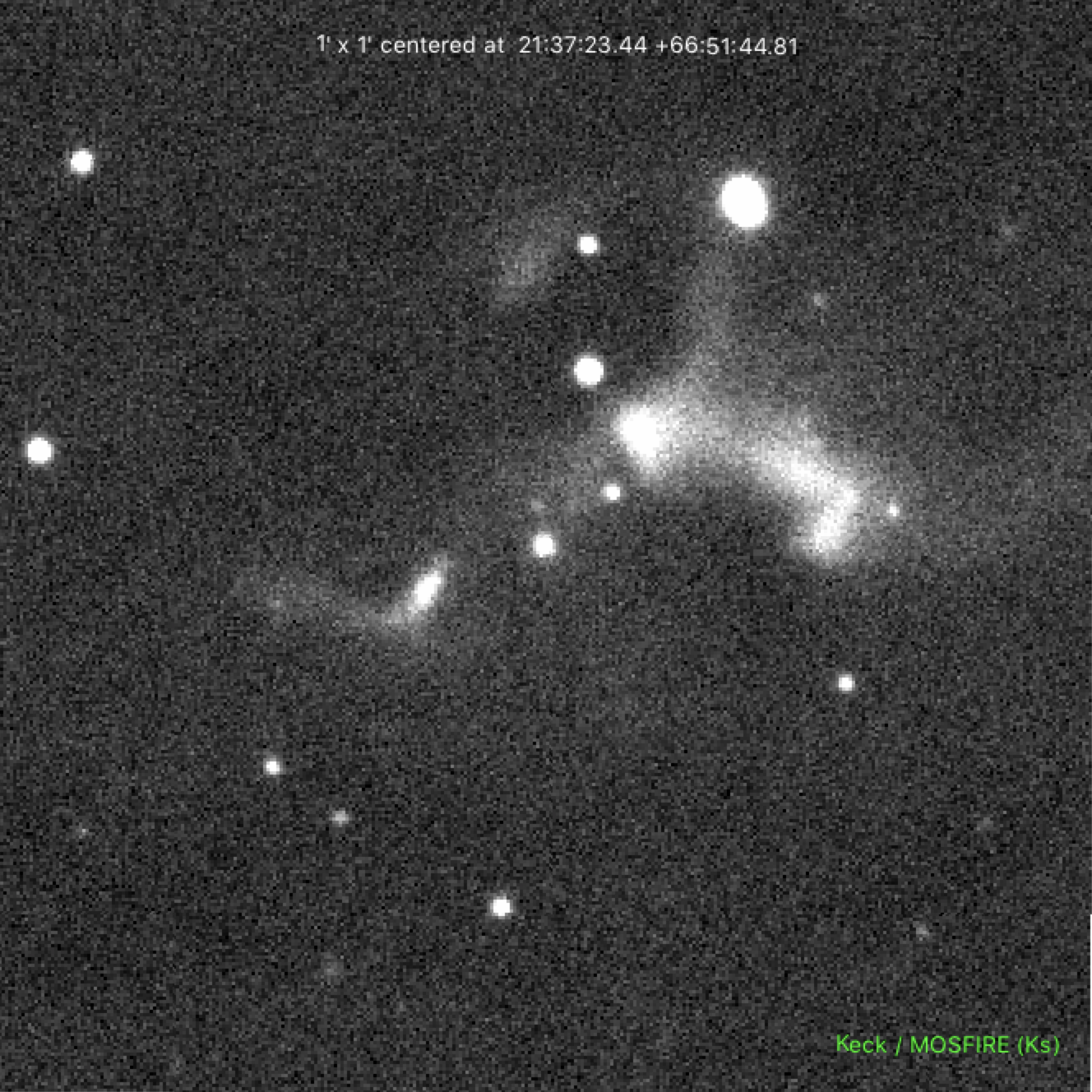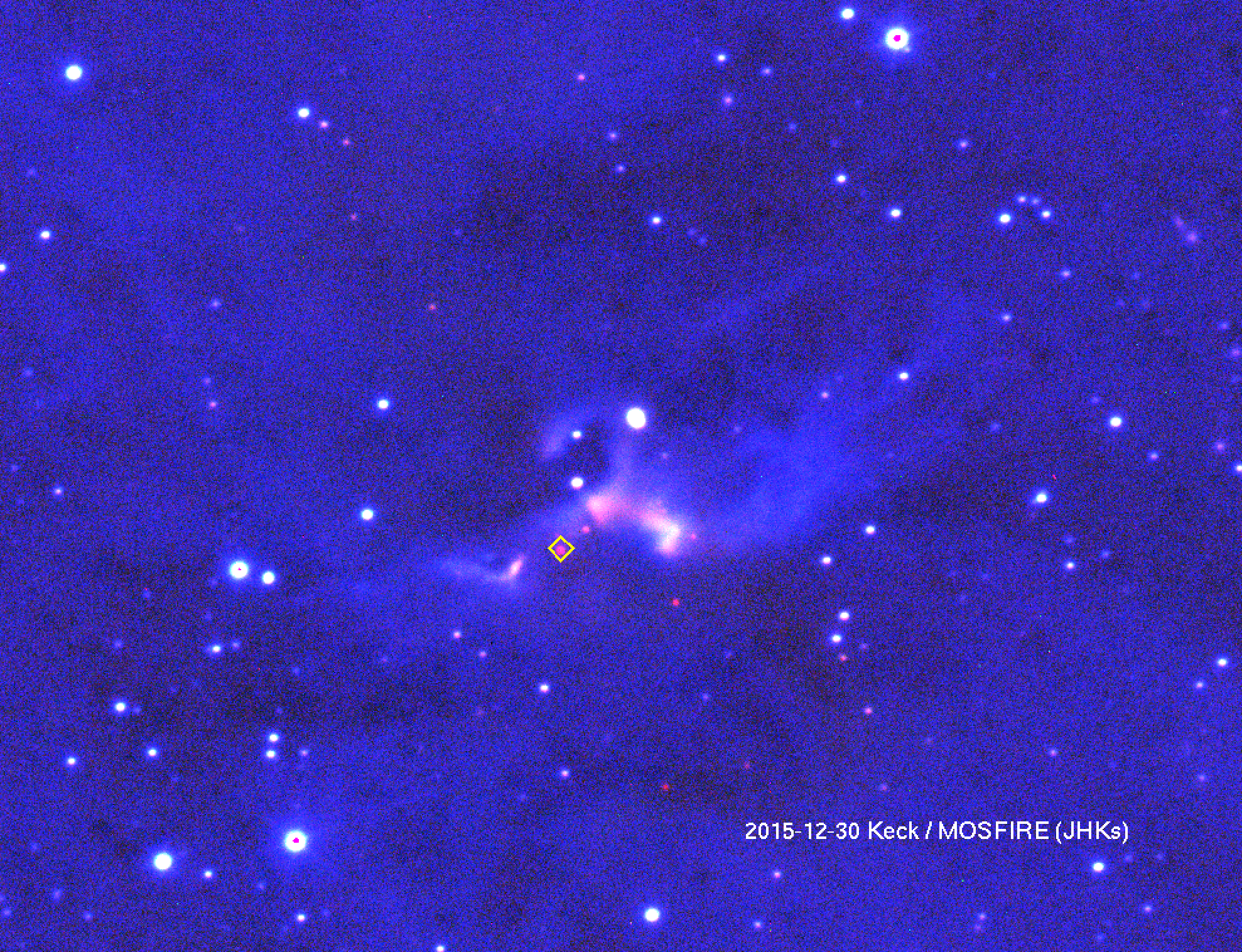
SUMMARY:
The source NWISE-F J213723.5+665145,
in the constellation of Cepheus,
appears to have undergone an outburst between 2011 and 2013 as discussed in the ATels referenced above.
As reported in
our ATel ,
we detected this source in late 2015 in the near-infrared Ks and H bands, but not the J-band.
Our photometric measurements are Ks = 16.36 +/- 0.04 mag, H = 18.7 +/- 0.2 mag, and J > 20.5 mag.
We also derive a refined position for the likely outbursting young stellar object of 21:37:23.44 +66:51:44.81 (J2000.).

SUPPORTING IMAGES:
The new NEOWISE source NWISE-F J213723.5+665145 is embedded within a small dark cloud region,
that has some protostellar type sources along with a few optical/infrared variables.
The region is not well-studied.
The image below illustrates the appearance of the nebula -- to the right of center -- between 2012 and 2013.
These data were collected and process by amateur astronomers.
The left image is by
Emil Ivanov
(taken in 2012) and the right image
is by Mathias Straube, Andy Sischka, Michael Wenge, Oliver Schneider, and
Manfred Mrotzek (taken over 2013-2015).
Image orientation is such that north is at PA= -48 deg.

The following images are at different wavelengths and times,
and indicate the complexities of the region.
Each panel is ~3' wide, with N=up and E=left.
The new optical nebula is the cyan circle in all panels.
It is located about 30" NW of the new NEOWISE and Keck/MOSFIRE point source,
which is the red circle in all panels.
The physical separation is about 27,000 AU or 0.09 pc.

The optical nebula is also visible in the J-band, as seen in the images from Keck/MOSFIRE and Palomar/Gattini.
The immediate vicinity of the outbursting source
has a somewhat crowded appearance in mid-infrared images (bottom row).
There are two point sources near center frame, one the new NEOWISE source (red circle),
and the other a known 2MASS and WISE source to the northwest,
having a protostellar spectral energy distribution.
The position of the new NEOWISE source was nebulous in the 2010 WISE data (right panel),
but a point source appeared by the time of the 2014 NEOWISE epoch (middle and left panels)
(as reported by Stecklum; ATel 13834).
Between the two mid-infrared point sources is a ridge of mid-infrared nebulosity,
which has brightened and corresponds to the eastern and more compact
optical/infrared nebula that is just NW of the new point source.
Near-infrared images (middle row) show a point source at Ks-band,
which is also seen at H-band but not detected in our J-band data.
Extended nebulosity is also present.
In top row,
yellow circles on the PanSTARRS image show sources with Gaia parallaxes.
Green circles on the 2MASS image show sources with 2MASS photometry.
Below is the NEOWISE lightcurve for NWISE-F 213723.5+665145.
The source appears to be still slightly rising following a fairly dramatic
brightening between WISE (2010), in which only nebulosity was seen,
and first-epoch NEOWISE (2014) imaging, which shows a point source.
The NEOWISE brightening is colorless.

The image below is our Keck/MOSFIRE JHKs image acquired on 2015, December 30.
A yellow diamond marks the position of the new NEOWISE source, with photometry given above.
It is not an optically visible source -- even in outburst.

In further developments: